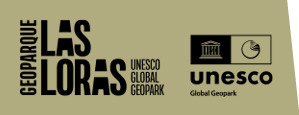Orbaneja del Castillo
In Orbaneja del Castillo historical, cultural and nature value are combined:
- Orbaneja del Castillo Site is considered an Asset of Cultural Interest both for its town, declared Historical Site in 1993, and for its Cueva del Azar Cave, close to the old town, declared of interest in rock-art category back in 1985.
- The Ebro Canyon in Orbaneja del Castillo is a Point of Geological Interest due to its important geological heritage and it is included in the IGME list of Sites of Geological Interest since 1983.
- The Ebro Canyon in Orbaneja del Castillo is an area of great nature value and therefore it is a Reserve Area of the Hoces del Alto Ebro y Rudrón, declared Nature Park in December 2008.
The waterfall, a living structure
Orbaneja del Castillo waterfall has a vertical drop of about 100 meters and a permanent flow of 200l/m. At the present, an exceptional tuffaceous structure is being developed here. It is an active and growing structure, where the geological time scale matches the human one, and where we can see the waterfall tufas, with their layers, moving forward and growing year after year in a changing and living landscape.
The water is quite full with carbonate coming from karstic areas aquifers and gets in contact mainly with formations of adapted mosses. Due to several complex physicochemical and biochemical processes, precipitated calcium carbonate (CaCo3) arises and is deposited on them in thin layers. The concentration gives place to a spongy deposit in which mosses, stems, leaves and fallen fruit become trapped: the tufas or travertines. Sequential deposits of calcium carbonate cause the tufa to grow and move forward. Depending on the water flow and its saturation in carbonates the tufa formation process can be more or less active and can be produced faster or slowly.
The living limestone tufas are quite frequent structures within the Hoces del Alto Ebro y Rudrón Nature Park, because of the karstic nature of their substratum. They may be seen at several points of the trails network.
Orbaneja del Castillo, connected to the Cueva del Agua Cave karstic upwelling, is the most important one, but there are other interesting and active structures which can be sighted, such as Tobazo cave and waterfall, between La Rad and Mordillo del Castillo, and the Tubilla del Agua ones, which name is precisely connected to this type of process, and where we can find three waterfalls, the Fuentona, related to Fuente Toba upwelling, Torcos, next to the town council, and Pisas waterfall, by the Hornillos River, in the lower part of the village.
Habitats in tufa formation waterfalls
The waterfalls plant communities are developed within high humidity microenvironments, with basic pH and where soil evolution is quite scarce.
Habitats resulting from these situations, petrifying springs with tufa formations (Habitat 7220 of the European Union) present a great interest because of:
- The geological, chemical and biological processes which come together inside them.
- Their importance to our understanding of the past through pollen, plant remains and fauna shapes trapped in the formation process and which are essential for the interpretation of the climate conditions and the landscapes of the past. The extraction and dating of plant material trapped in them, has given place to some surprises such as the natural presence of Pinus Nigra Arnold Sentinel within the territory 3.000 years ago.
- Their high degree of fragility and quick answer to environmental conditions variations, mostly what concerns water quality and flow, can be used as indicators.
Their usage as building material
The organic matter once trapped inside the calcium carbonate tends to disintegrate and disappear, leaving its holes or negatives. This results in a highly porous rock, the tufa, which is very light but very resistant too.
It was also very easy to manipulate (it is said that only two people and a saw were needed in order to extract it) and therefore it was often used as building material for walls or vaults and arches (because of its weight) in villages such as Orbaneja del Castillo and Tubilla del Agua, where these processes often occurred. Next to the road other tuffaceous structures can be seen. They are previous to the present waterfall and are no longer active, they are fossils right now, and were used in the past, when they were still in development, as “stone quarry”.
Baths and stepping the edges of the several tuffaceous pools carry the loss of the mosses and the whole processes. Please do not step on the tuffaceous structure. Its conservation is your responsibility.
